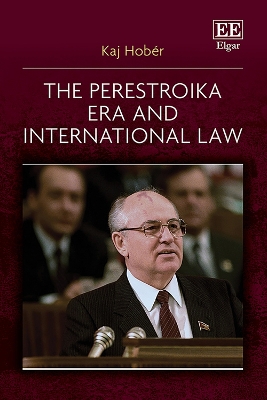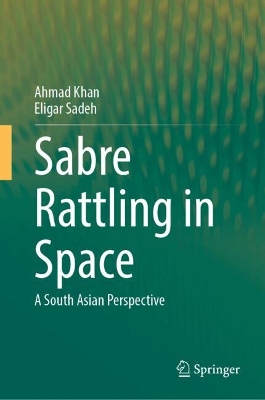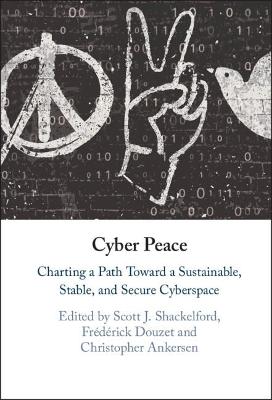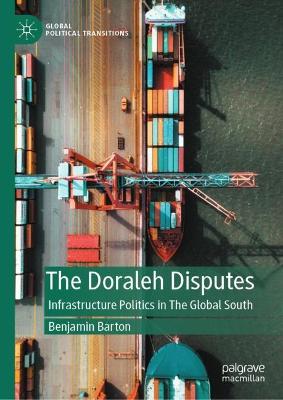Threats of Force and International Law
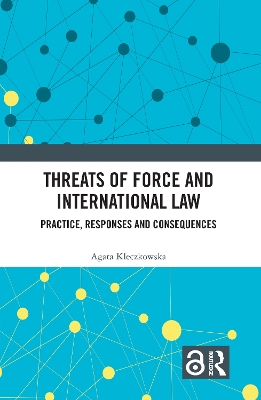 portes grátis
portes grátis
Threats of Force and International Law
Practice, Responses and Consequences
Kleczkowska, Agata
Taylor & Francis Ltd
11/2024
138
Mole
9781032452258
15 a 20 dias
Descrição não disponível.
List of abbreviations
Introduction
1 History and definition of the threats of force
Introduction
1.1 The history of the prohibition of threats of force
1.2 Definition of the threat of force
1.2.1 Forms of threats of force
1.2.2 Subjective elements - intent to use force and credibility of threats
1.2.3 The objective of the threat of force
1.2.4 Other elements of the threat of force
1.2.5 Summary
2 The status of the prohibition of the threats of force
Introduction
2.1 The prohibition of the threats of force v. the prohibition of the use of force
2.1.1 '[A]gainst the territorial integrity and political independence or in any other manner inconsistent with the purposes of the United Nations'
2.1.2 Exceptions to the prohibition of the threats of force
2.2 Other norms breached by the threat of force
2.3 Different kinds of threats
2.4 Is the prohibition of threats of force a peremptory norm or a customary norm?
2.5 Conclusions
3 Threats of force in practice
Introduction
3.1 Threats of force as actions
3.1.1 Threats of force involving the movement of armed forces
3.1.1.1 Military manoeuvres
3.1.1.2 Concentration of forces
3.1.1.3 Mobilization of forces
3.1.2 Possession of nuclear weapons
3.1.3 Violation of airspace and territorial waters
3.2 Oral threats of force
3.3 Written threats of force
3.4 Ultimatums
3.5 Domestic legislation of states
3.6 War propaganda
3.7 'Accumulation of events' as a threat of force
3.8 Conclusions
4 Responses to threats of force
Introduction
4.1 Responses to threats of force under the framework of international organizations
4.1.1 The United Nations
4.1.1.1 The UN Security Council
4.1.1.2 The UN General Assembly
4.1.1.3 Other UN organs
4.1.2 Organs outside the United Nations
4.1.3 Conclusions
4.2 Measures outside international organizations
4.3 Conclusions
5 Consequences of threats of force
Introduction
5.1 Consequences of threats of force when they were and were not followed by the use of force
5.1.1 Threats of force that were not followed by the use of force
5.1.2 Threats of force followed by the use of force
5.1.3 Conclusions
5.2 Ex injuria jus non oritur
5.2.1 Prohibition of illegal territorial acquisitions
5.2.2 Invalidity of treaties concluded as the result of illegal threats of force
5.3 Conclusions
Final conclusions
Index
Introduction
1 History and definition of the threats of force
Introduction
1.1 The history of the prohibition of threats of force
1.2 Definition of the threat of force
1.2.1 Forms of threats of force
1.2.2 Subjective elements - intent to use force and credibility of threats
1.2.3 The objective of the threat of force
1.2.4 Other elements of the threat of force
1.2.5 Summary
2 The status of the prohibition of the threats of force
Introduction
2.1 The prohibition of the threats of force v. the prohibition of the use of force
2.1.1 '[A]gainst the territorial integrity and political independence or in any other manner inconsistent with the purposes of the United Nations'
2.1.2 Exceptions to the prohibition of the threats of force
2.2 Other norms breached by the threat of force
2.3 Different kinds of threats
2.4 Is the prohibition of threats of force a peremptory norm or a customary norm?
2.5 Conclusions
3 Threats of force in practice
Introduction
3.1 Threats of force as actions
3.1.1 Threats of force involving the movement of armed forces
3.1.1.1 Military manoeuvres
3.1.1.2 Concentration of forces
3.1.1.3 Mobilization of forces
3.1.2 Possession of nuclear weapons
3.1.3 Violation of airspace and territorial waters
3.2 Oral threats of force
3.3 Written threats of force
3.4 Ultimatums
3.5 Domestic legislation of states
3.6 War propaganda
3.7 'Accumulation of events' as a threat of force
3.8 Conclusions
4 Responses to threats of force
Introduction
4.1 Responses to threats of force under the framework of international organizations
4.1.1 The United Nations
4.1.1.1 The UN Security Council
4.1.1.2 The UN General Assembly
4.1.1.3 Other UN organs
4.1.2 Organs outside the United Nations
4.1.3 Conclusions
4.2 Measures outside international organizations
4.3 Conclusions
5 Consequences of threats of force
Introduction
5.1 Consequences of threats of force when they were and were not followed by the use of force
5.1.1 Threats of force that were not followed by the use of force
5.1.2 Threats of force followed by the use of force
5.1.3 Conclusions
5.2 Ex injuria jus non oritur
5.2.1 Prohibition of illegal territorial acquisitions
5.2.2 Invalidity of treaties concluded as the result of illegal threats of force
5.3 Conclusions
Final conclusions
Index
Este título pertence ao(s) assunto(s) indicados(s). Para ver outros títulos clique no assunto desejado.
threat of force;use of force;international peace and security;United Nations Security Council;public international law;International Law;UN;ICJ;Illegal Threats;Rambouillet Accords;USA Government;Violate;Secretary Of State;International Humanitarian Law;Lao People's Democratic Republic;Laos;USA Department;Chapter VII;UNSC Power;Netherlands International Law Review;Stimson Doctrine;AAFC;USA Action;Briand Kellogg Pact;Nuclear Weapons;Territorial Integrity;Federal Republic Of Germany;Vienna Convention;Customary Norm
List of abbreviations
Introduction
1 History and definition of the threats of force
Introduction
1.1 The history of the prohibition of threats of force
1.2 Definition of the threat of force
1.2.1 Forms of threats of force
1.2.2 Subjective elements - intent to use force and credibility of threats
1.2.3 The objective of the threat of force
1.2.4 Other elements of the threat of force
1.2.5 Summary
2 The status of the prohibition of the threats of force
Introduction
2.1 The prohibition of the threats of force v. the prohibition of the use of force
2.1.1 '[A]gainst the territorial integrity and political independence or in any other manner inconsistent with the purposes of the United Nations'
2.1.2 Exceptions to the prohibition of the threats of force
2.2 Other norms breached by the threat of force
2.3 Different kinds of threats
2.4 Is the prohibition of threats of force a peremptory norm or a customary norm?
2.5 Conclusions
3 Threats of force in practice
Introduction
3.1 Threats of force as actions
3.1.1 Threats of force involving the movement of armed forces
3.1.1.1 Military manoeuvres
3.1.1.2 Concentration of forces
3.1.1.3 Mobilization of forces
3.1.2 Possession of nuclear weapons
3.1.3 Violation of airspace and territorial waters
3.2 Oral threats of force
3.3 Written threats of force
3.4 Ultimatums
3.5 Domestic legislation of states
3.6 War propaganda
3.7 'Accumulation of events' as a threat of force
3.8 Conclusions
4 Responses to threats of force
Introduction
4.1 Responses to threats of force under the framework of international organizations
4.1.1 The United Nations
4.1.1.1 The UN Security Council
4.1.1.2 The UN General Assembly
4.1.1.3 Other UN organs
4.1.2 Organs outside the United Nations
4.1.3 Conclusions
4.2 Measures outside international organizations
4.3 Conclusions
5 Consequences of threats of force
Introduction
5.1 Consequences of threats of force when they were and were not followed by the use of force
5.1.1 Threats of force that were not followed by the use of force
5.1.2 Threats of force followed by the use of force
5.1.3 Conclusions
5.2 Ex injuria jus non oritur
5.2.1 Prohibition of illegal territorial acquisitions
5.2.2 Invalidity of treaties concluded as the result of illegal threats of force
5.3 Conclusions
Final conclusions
Index
Introduction
1 History and definition of the threats of force
Introduction
1.1 The history of the prohibition of threats of force
1.2 Definition of the threat of force
1.2.1 Forms of threats of force
1.2.2 Subjective elements - intent to use force and credibility of threats
1.2.3 The objective of the threat of force
1.2.4 Other elements of the threat of force
1.2.5 Summary
2 The status of the prohibition of the threats of force
Introduction
2.1 The prohibition of the threats of force v. the prohibition of the use of force
2.1.1 '[A]gainst the territorial integrity and political independence or in any other manner inconsistent with the purposes of the United Nations'
2.1.2 Exceptions to the prohibition of the threats of force
2.2 Other norms breached by the threat of force
2.3 Different kinds of threats
2.4 Is the prohibition of threats of force a peremptory norm or a customary norm?
2.5 Conclusions
3 Threats of force in practice
Introduction
3.1 Threats of force as actions
3.1.1 Threats of force involving the movement of armed forces
3.1.1.1 Military manoeuvres
3.1.1.2 Concentration of forces
3.1.1.3 Mobilization of forces
3.1.2 Possession of nuclear weapons
3.1.3 Violation of airspace and territorial waters
3.2 Oral threats of force
3.3 Written threats of force
3.4 Ultimatums
3.5 Domestic legislation of states
3.6 War propaganda
3.7 'Accumulation of events' as a threat of force
3.8 Conclusions
4 Responses to threats of force
Introduction
4.1 Responses to threats of force under the framework of international organizations
4.1.1 The United Nations
4.1.1.1 The UN Security Council
4.1.1.2 The UN General Assembly
4.1.1.3 Other UN organs
4.1.2 Organs outside the United Nations
4.1.3 Conclusions
4.2 Measures outside international organizations
4.3 Conclusions
5 Consequences of threats of force
Introduction
5.1 Consequences of threats of force when they were and were not followed by the use of force
5.1.1 Threats of force that were not followed by the use of force
5.1.2 Threats of force followed by the use of force
5.1.3 Conclusions
5.2 Ex injuria jus non oritur
5.2.1 Prohibition of illegal territorial acquisitions
5.2.2 Invalidity of treaties concluded as the result of illegal threats of force
5.3 Conclusions
Final conclusions
Index
Este título pertence ao(s) assunto(s) indicados(s). Para ver outros títulos clique no assunto desejado.
threat of force;use of force;international peace and security;United Nations Security Council;public international law;International Law;UN;ICJ;Illegal Threats;Rambouillet Accords;USA Government;Violate;Secretary Of State;International Humanitarian Law;Lao People's Democratic Republic;Laos;USA Department;Chapter VII;UNSC Power;Netherlands International Law Review;Stimson Doctrine;AAFC;USA Action;Briand Kellogg Pact;Nuclear Weapons;Territorial Integrity;Federal Republic Of Germany;Vienna Convention;Customary Norm


